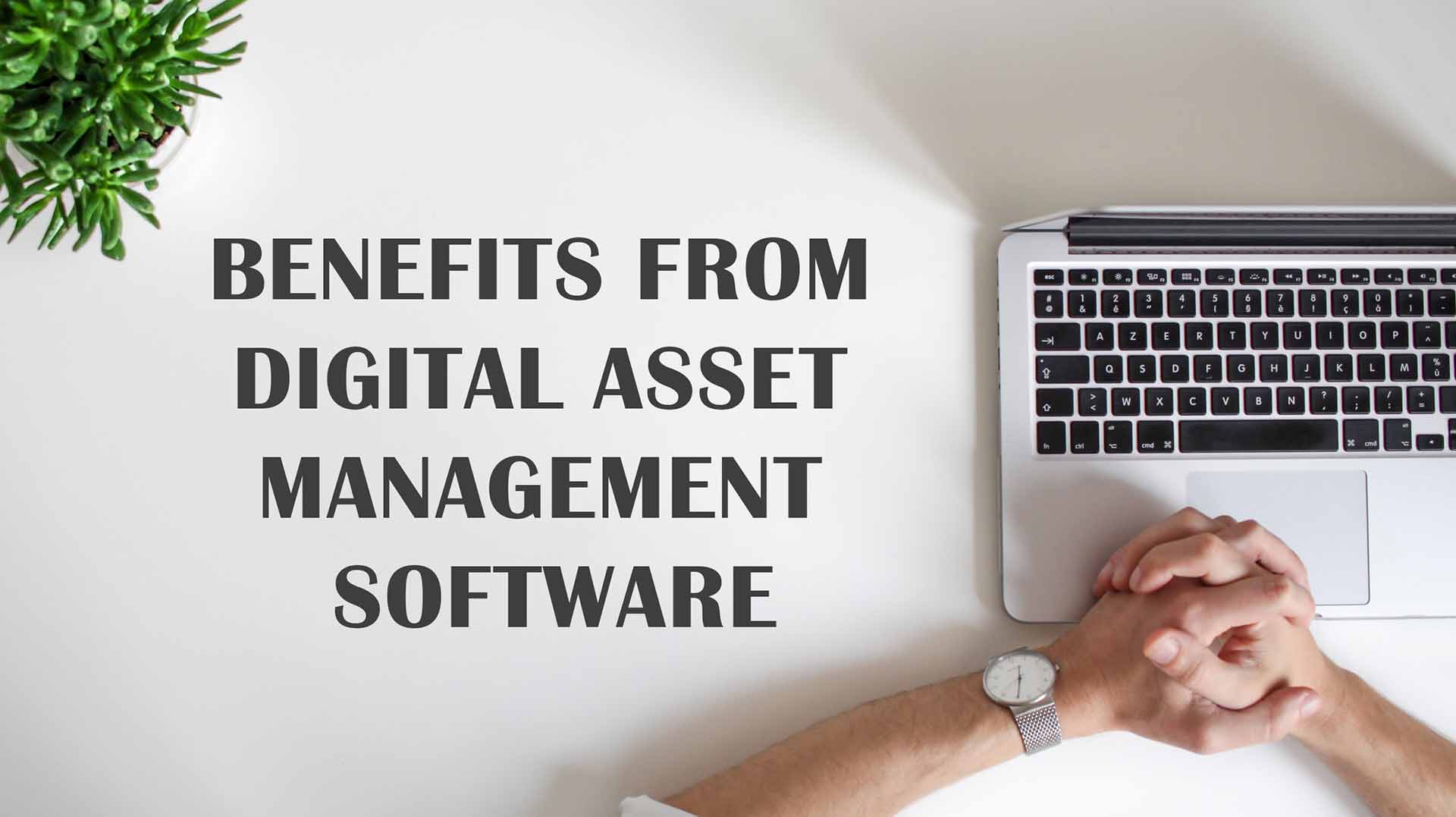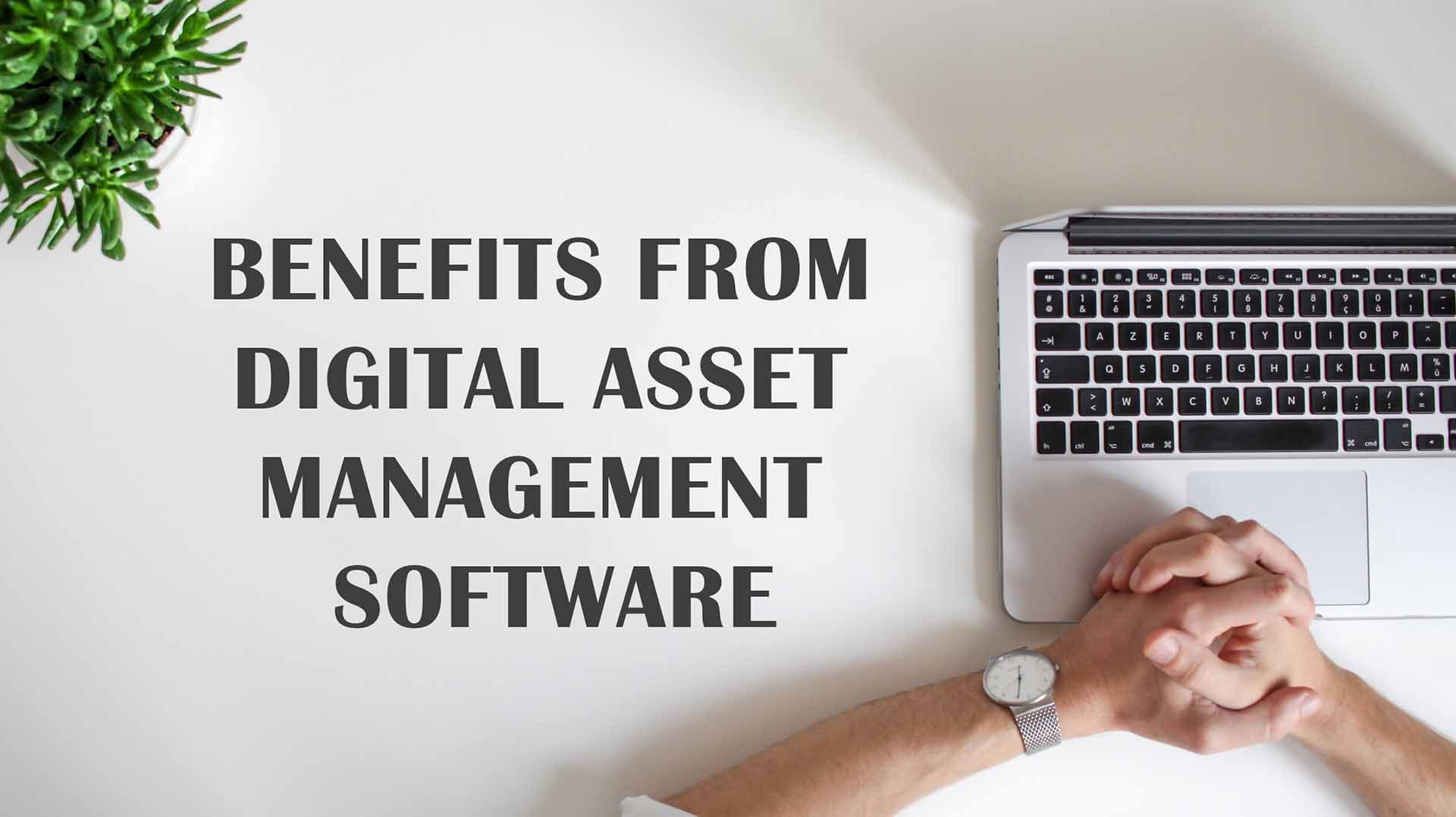Let me tell you a story about the importance of a central repository for your media files. Recently I’ve been working on a new creative project of mine – not something from my regular job, rather a hobby…
The project involved several other people, but since I was the last to work with it, all the latest files (which means all of them) were on my home computer. I bought a new laptop around that time, and the first thing I wanted to do was, naturally, to transfer all important data I had.
Having done it, I realized I didn’t have a proper backup for my work and decided to upload everything to cloud storage. My home Internet connection is damn awful, so I decided to do it from the office when I come there the next time. Guess what…
When I was installing some additional software for my laptop, I suddenly saw a famous blue screen. The system said it didn’t like me, packed its things, and went back to momma’s. With all my project files created in a half year of work. Nothing like a good creative process, am I right? Sheesh, I knew the fault was mine and only mine – I should have backed it all up ages before, I could have left some copy when I was transferring, but it didn’t occur to me something like this could happen to a new laptop. And, besides, I had been too lazy.
Luckily, I managed to withdraw the data I needed from the hard drive and backup was the first thing I did after my system was restored. I ain’t the first one and ain’t the last one who has experienced something like this – data loss is something that happens to everyone. But such problems can be avoided, and if you, like me, work in the creative sphere and have lots of project files to manage, there is no better solution than digital asset management software.
Table of contents:
What Is Digital Asset Management Software?

Open-source digital asset management tools or DAM programs are a software solution that allows you to store, operate, track, and share your digital assets in a single place. This type of apps is usually cloud-based and has certain functions depending on the type of assets you’re working with. It is an ideal solution for creatives, who want their digital files to be manageable while they are stored safely.
According to Globe New Wire, the size of the DAM market has been rapidly growing in recent years and showcased a share of $1.24 billion in 2018. This number is believed to grow fivefold to $6.9 billion in 2024. This is an amazing rate which could signify only one thing: I am not the only one who needs my data backed up!
Seriously, though, why would businesses show such a great interest in DAM? It’s, basically, the same thing I’ve been talking about from the very beginning: it’s safer this way, your creative files are more organized this way, and so on and so forth. It makes you work with them easier, faster, and more efficient. As a result, companies can save significant amounts of time and money, not to mention the number of nerve cells. And you’re definitely gonna need these if you’re working in design industry because there are many digital asset management software benefits.
Advantages of Digital Asset Management System for Graphic Designers
№1: Everything at the same place

With all the graphical files in the same place, it is easier to manage them. You do not have to look for the correct New Folder (23) on your computer where you could possibly put the original file – the system works in a way that necessitates you to have your digital media assets organized. With all the metadata, you can easily filter out and search for whatever you need within the needed project and never lose a file again. Helps a lot if you have a big workplace community or international employees.
№2: Branding consistency

It is very much similar to the previous point, however, with one slight difference: the impact is not on a specific file or project but on a brand. Let me give you an example: each brand is supposed to have their brand book where all the logos, fonts, colors, themes, and etc are recorded. It helps the brand follow their guidelines and accumulate their market presence. Oft it happens that whenever you need a logo to post somewhere, you have to ask your colleagues in a chat, they start searching their archives, it takes longer than necessary and the image quality is worse than expected. Familiar? It wouldn’t be if all your branding information was stored at the same place with full access to every employee who might need it.
№3: Review

Many DAM tools provide the possibility to review the assets like pictures, photos, videos, or other multimedia and suggest/apply certain changes. In the world of graphic design where good and precise feedback is one of the most valuable resources, review options are pure gold. Many companies still do it via email and lose dozens of hours forwarding the messages to different stakeholders so that they could check the newest design. With such an approach, feedback can easily get lost or design can go unnoticed. A design-specified DAM prevents that from happening, providing efficient review tool and gathering all the feedback to a single place.
№4: Collaboration possibilities

Most companies have several people to review the design, run it through several iterations, suggest edits that supposedly have to improve the work. Quite often, several people need to work on the same file simultaneously, add their annotations, discuss it. Yes, there are messengers where you can create a group chat, but each of them will have to highlight what they need to highlight and upload a separate copy of the file. Certainly, it is an improvement compared to email proofing but is still problematic. The more reviewers you have, the more burdensome the process will be. However, it can become much easier if you add the feedback to the very same file from the DAM system asset base.
№5: Client communication

Whatever project you’re working on, communication with clients is an essential part of your professional life. The point of marketing content asset management software is that you can give access to your digital content to anyone, including external stakeholders that are not a part of your company. In terms of design, it opens many new possibilities. Cooperation with your teammates is much easier since you know your creative team much better, you know what to expect of them, you know how to communicate with them. In a case with clients, you do not know them that well unless it’s a long-term returning customer. Their feedback is vital for the project and much harder to deal with, so a digital asset management system that would save their responses and convey them to you would be invaluable.
№6: Version history

Completing the project at your first try is some kind of an oasis mirage in a desert that seems to be so wonderful but is almost impossible to reach. The more stakeholders your project has, the greater its importance is, and the pickier all reviewers will be. Generally, all these review tools and communication tricks are purposed for one primary goal: to improve the design. At first, it is a sketch, then a full artwork, then you apply edits, again and again, improving your work. In this process, it is important to track the version history – how did the artwork look like when you last updated it? What were the changes?
The thing is that not all ideas that reviewers and creative come up with are good. Some are brilliant, some are okay, and some are terrible, but, at times, you ought to visualize the concept first to understand if it’s worth anything. Comparing different versions and examples, you can literally see the progress and check if the work was really improved. If not, you can always fall back on a previous version, and in graphic design, it might save the day.
№7: Comprehensive reporting

If you are using digital assets management systems for the graphic design projects, you might be interested in gathering precise information about your file. Checking out who did what and when is essential for a thorough analysis of your work and future project planning. If your work wasn’t always successful, reports might help to understand what the weak spot was and eliminate it in future. Besides, any kind of information might be useful for your client after the project is already finished.
The Best Digital Asset Management Software
№1: Approval Studio
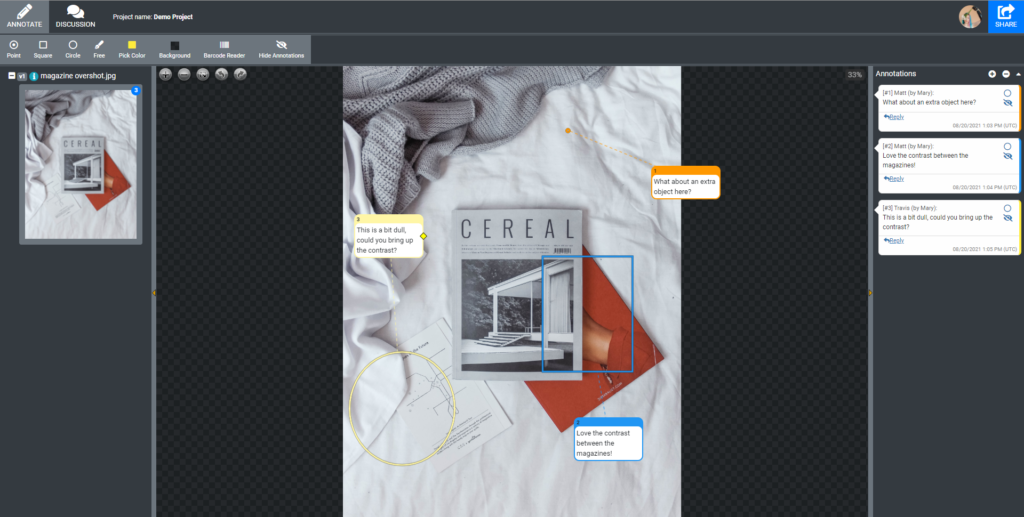
If you need a tool that would correspond with all the parameters above, Approval Studio is the very obvious choice. Apart from a single storage and project management functions, it allows online communication with team members and clients, reporting, has a powerful review tool and a great comparison mode that enables AI detections of the applied changes and highlights them for you in four different modes. There are integration with Slack, ability to invite external reviewers, and different plans that would suit everybody from freelancers to enterprises. If you are working in the design industry, Approval Studio is a great platform to choose with the sound price offers.
№2: Brandfolder
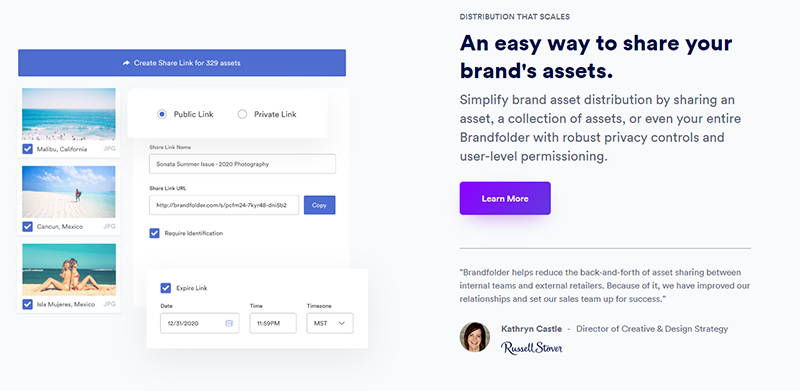
Brandfolder is a tool that would be a good fit for marketers who have to process tons of information every day and go back and forth with it. While the developers offer strong organizational functions such as advanced and intuitive database search, the main benefit of Brandfolder is that it’s performance-oriented. You can see who, how, when, and where is using the assets under your control and how they are performing. It is a great tool to work on the effectiveness of your brand development strategies.
№3: Bynder
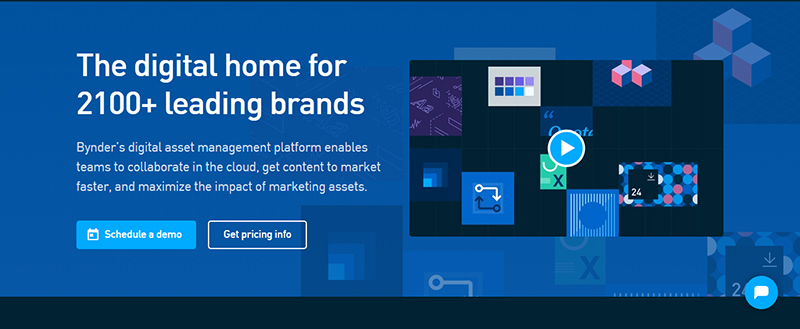
These guys make a huge point with stability maintenance. It is, basically, the main aim of the tool – to make your workflow consistent from its very beginning when you only have a concept or idea for branding or marketing and later distribute the finished products to multiple channels. It also offers a simple but effective review tool, ability to categorize your projects and assets into campaigns, statistics and performance rates. The devs tried really hard to fit every step of the branding process into one tool, and, I have to admit, not without success.
№4: Widen Collective
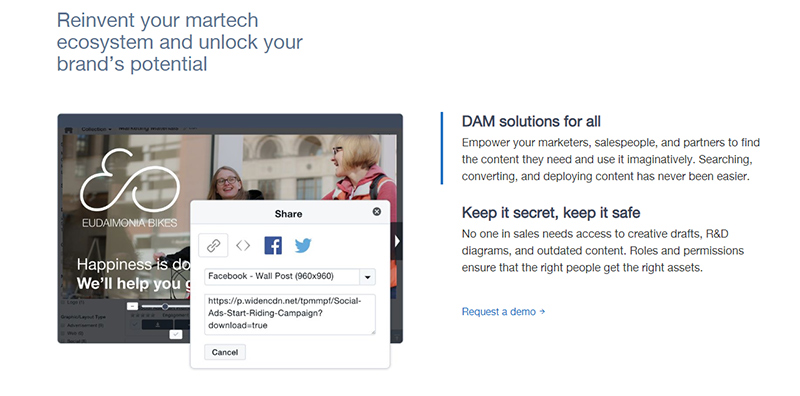
Another one among the great services for your martech if you want to cover it all. Huge possibilities in file management include the use of a wide range of metadata like keywords, colors, demographics, and many other markers. Also, a huge benefit is automatic file conversions. Analytics and reporting apply both to a single asset and to the whole dashboard. Every brand experience can be personalized with different features and unique templates. Being established in 1948, Widen is a real dinosaur of the industry.
№5: Wrike
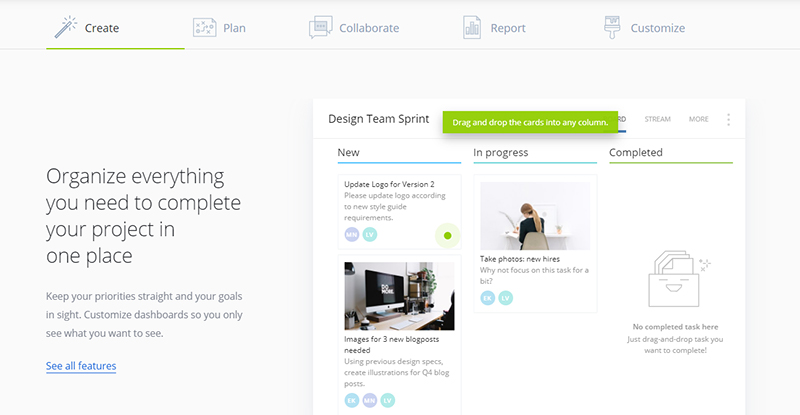
Wrike is a SAAS popular with many big companies. It is a great choice when you need to make your production and distributing workflow both effective and simple. In my opinion, the strongest part of the tool is a wide range of reporting and analytical functions: they provide Gantt charts, to track time and budget, and reports on teams. You’ll be able to pull out whatever data necessary and optimize your resource management to a great extent.
Final Thoughts
So, the epitome of this article is the following: if you are not sure whether your team needs library asset management solutions or not, ask yourself if you have ever encountered any of problems that it can solve. Have you ever thought of automating mundane and boring tasks with two clicks instead of whole emails chain and manual work? DAM software can solve these issues for you, especially if you work in the industry of graphic design. In the creative sphere, control over the chaos is essential to achieve a great result. This control starts with yourself, your own capabilities, motivation, and desire, and ends with the whole company, dozens of projects, hundreds of assets, and numerous clients who are not interested in how the job is done – they only want to know how fast and how well.
All in all, as always, Approval Studio is ready to back you up at any moment and help you with your asset control organization. All you need to do is just contact us – free demo sessions are available. Hope to get in touch with you soon.
Have a nice one!

 TEAM SOLUTIONS
TEAM SOLUTIONS WORKFLOW SOLUTIONS
WORKFLOW SOLUTIONS



 REVIEW TOOL
REVIEW TOOL PROJECT MANAGEMENT
PROJECT MANAGEMENT TOOLS & INTEGRATIONS
TOOLS & INTEGRATIONS
 CLIENT INTERVIEWS
CLIENT INTERVIEWS








